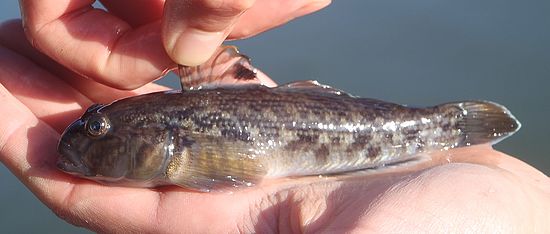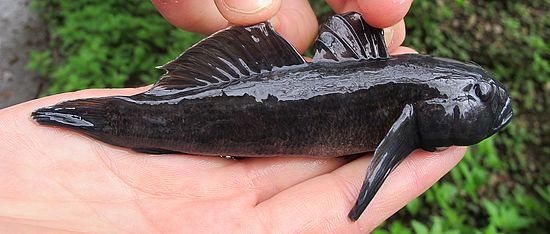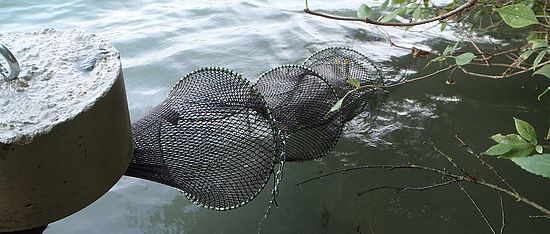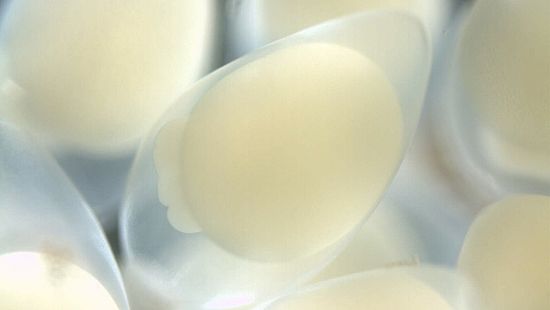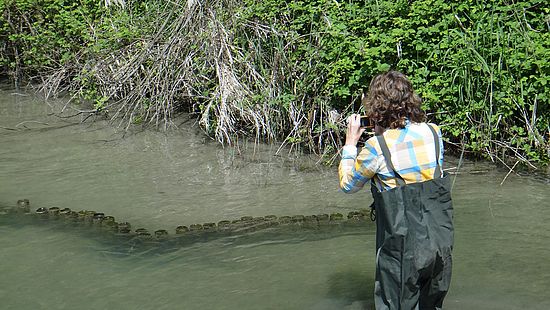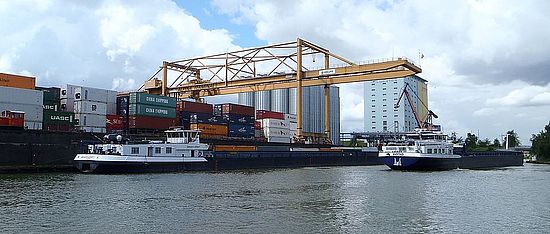Ponto-Caspian gobies in Switzerland
Ponto-Caspian gobies are currently spreading along European waterways, presumably along shipping routes. In 2012 the round goby was detected in Basel. The bighead goby reached Switzerland shortly before. Both bottom-dwelling fish species display impressive colonisation capabilities and rapid population growth.
We are interested in:
- The biology of Ponto-Caspian gobies in local waters (habitat, food web, reproductive behaviour)
- Population genetics and mechanism of spread
- Ecological and economic consequences of the invasion
- Management options in Switzerland
The goby team combines knowledge from different natural sciences backgrounds with skills from economics and the social sciences.
Project supported by BAFU, Cantons Basel City, Basel Country, Aargau, Solothurn, Zürich and FoNEW.
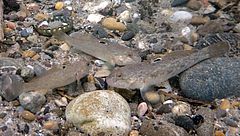



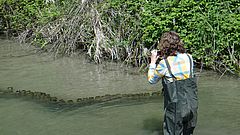
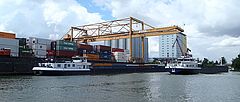
Research topics
Goby barrier
We investigate whether a selective goby barrier is a means of preventing the further active spread of invasive gobies. We conduct basic research primarily focusing on the swimming ability of bottom-dwelling fish species. Thereby, we aim to find out whether native bottom-living species and invasive gobies differ in their swimming ability. This research could be the data basis for constructing and installing a selective barrier that prevents or impedes the active up-stream spread of invasive gobies.
Aquarium hobbyists
Our aim is to find out whether aquarium hobbyists are a relevant vector for the spread of gobies in the Rhine river basin, especially in Switzerland. We want to answer the following questions: Are gobies kept in aquariums or garden ponds and traded or passed on? Are gobies released or is there reason to believe that they will be released? Are gobies exchanged between anglers and aquarists and is an additional 'loop' created, e.g. for intermediate caging of bait fish or utilizing live-caught gobies? In addition to answering research questions, this subproject aims to provide scientific background information to develop recommendations for action.
Passive spread by translocation via recreational boats
There are strong indications that gobies can get passively translocated by clutches of eggs attached to recreational boats. We investigate this possibility by inspecting boats in various harbours along the Rhine river and during boat cleanings, as well as by behavioural observations of gobies in marinas. Furthermore, we determine the resistance of goby eggs towards flow, desiccation and treatment with cleaning detergents. This research will enable us giving boat owners recommendations of how to treat their vessels in order to minimize the risk of translocation of invasive gobies.
Monitoring in the port of Basel-Kleinhüningen
Since 2012, we regularly monitor the population of gobies intensely by using minnow traps in the port of Basel-Kleinhüningen. Since the arrival of the gobies in the Rhine river at Basel, the monitoring continues with less expenditure (once a year), but still systematically and organized to follow the development of the local population of gobies.
Quick Links

